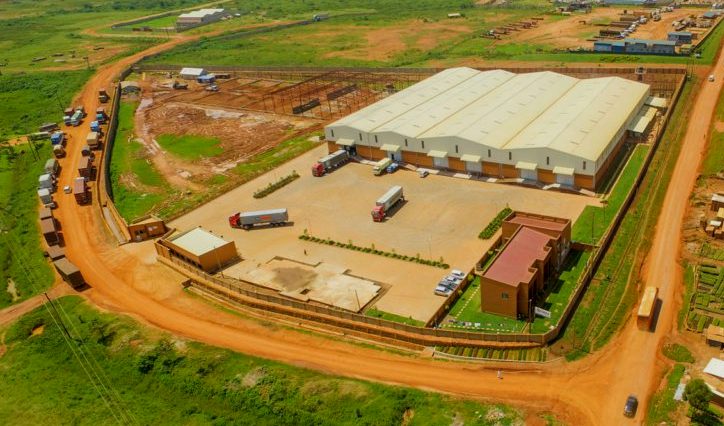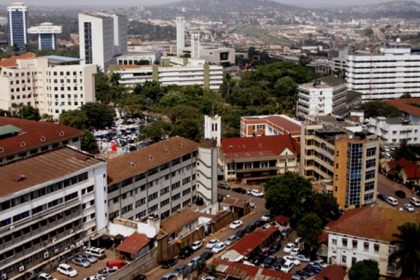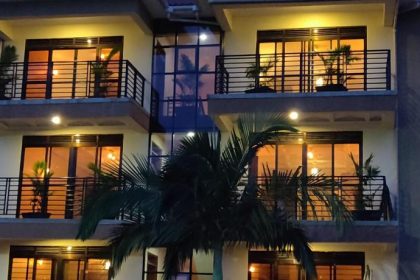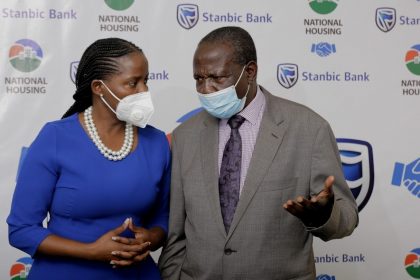Knight Frank reports sustained demand for industrial space
 Demand for industrial space was hinged on business growth and improved economic environment with the highest demand recorded for space
sizes ranging from 300-1000 square metres and a decline in demand for spaces ranging over 1000 sq mts.
Demand for industrial space was hinged on business growth and improved economic environment with the highest demand recorded for space
sizes ranging from 300-1000 square metres and a decline in demand for spaces ranging over 1000 sq mts.
Knight Frank reports sustained demand for industrial space
Landlords in Kampala’s industrial real estate sector are increasingly seeking longer lease commitments from tenants, to maintain stable and predictable cash flows. However, tenants continue to have cost concerns with most preferring favourable lease terms and competitive rental rates.
This has created both a landlord and tenant market with most tenants prioritizing proximity to suppliers, customers, and transportation hubs in bid to improve operational efficiency.
According to the latest findings by property management and consultancy firm, Knight Frank, growing demand for industrial space has led some landlords to increase their asking rental rates especially within the Traditional Industrial area. This has not been favourable for most tenants as they continue to drive harder bargains for the same.
In its H2 2023 Kampala Property Market Performance Review and Outlook, the firm reports, ‘Demand for industrial space was hinged on business growth and improved economic environment with the highest demand recorded for space sizes ranging from 300-1000 square metres and a decline in demand for spaces ranging over 1000 sq mts. Companies in the automotive, manufacturing, interior design, pest control, pharmaceutical, and beverage industries, to name a few, are driving up this demand with businesses looking to expand, relocate or startup’.
However, companies are being careful before they buy industrial land/warehouse space as they evaluate the economic conditions, growth plans and their financial capabilities.
There has been a marked preference for areas of Bweyogerere, Namanve and Kawempe where land prices are more affordable as compared to the traditional industrial areas of 1st to 8th Street and Nakawa/Ntinda.
The increased interest in these areas is attributed to the continued infrastructure improvements within these areas easing access to major trade routes connecting them to the rest of the country and the export/import market especially to the East African Community. These improvements also improve accessibility to Kampala’s Central Business district for goods bound for the city.
Rental rates remained stable in H2 2023 as compared to H2 2022 with rates ranging between $3 to $ 7 dollars per square metres for warehouse space depending on size, location, and other factors. Industrial letting periods varied from 3 to 9 months depending on various factors. Long marketing and sale periods of over six months were registered for large industrial properties.
In the period under review, the prime residential market maintained relative stability achieving a four percent rise in the average monthly rents for two-bedroom apartment units, while rent for three-bedroom apartment units increased by one percent on a year-on-year comparison.
Prime occupancy rates increased by six percent. The growth in average rentals is attributed to prime apartment units that have recently been completed and come onto the market offering larger living spaces and better amenities thus commanding higher rates. Expatriate staff unable to find stand-alone houses for occupation within their rental budget or alternatively those who prefer community living are opting for apartments thus contributing to the rise in occupancy levels.
Greater Kampala and other secondary suburbs like Kulambiro, Kikaya, Mulago, and Ntinda exhibited sustained demand for homes in the middle-income price
ranges, with most buyers drawn to properties priced below UGX 350,000,000 (just over $90,000). In a quest to optimize returns, property developers are maximising the development of their plots through densification, while others are innovating mixed-use configurations, integrating residential and commercial elements within prime residential areas.
Demand for prime office space persisted with prime rents recorded at $16.5 and $15.0 per square metre per month for Grade A and Grade AB, respectively.
This represents, a 10% rental increase for Grade A and 12% surge for Grade AB as compared to H2 2022 rental levels. There has been a general improvement
in occupancy for Grade A and AB properties across board with vacancy rates reducing by 1% as compared to H2 2022.

 Upturn in Kampala’s residential housing sector as economy recovers
Upturn in Kampala’s residential housing sector as economy recovers
 Uganda’s proposed tax changes may dampen investor confidence
Uganda’s proposed tax changes may dampen investor confidence
 Kampala metropolitan real estate market recovers from lows after pandemic
Kampala metropolitan real estate market recovers from lows after pandemic
 Stanbic Bank introduces insurance package to protect schools from risks
Stanbic Bank introduces insurance package to protect schools from risks
 Emerging oil industry helps to revive Kampala high-end residential market
Emerging oil industry helps to revive Kampala high-end residential market
 Stanbic subsidiaries in tripartite pact with National Housing company to develop real estate
Stanbic subsidiaries in tripartite pact with National Housing company to develop real estate
